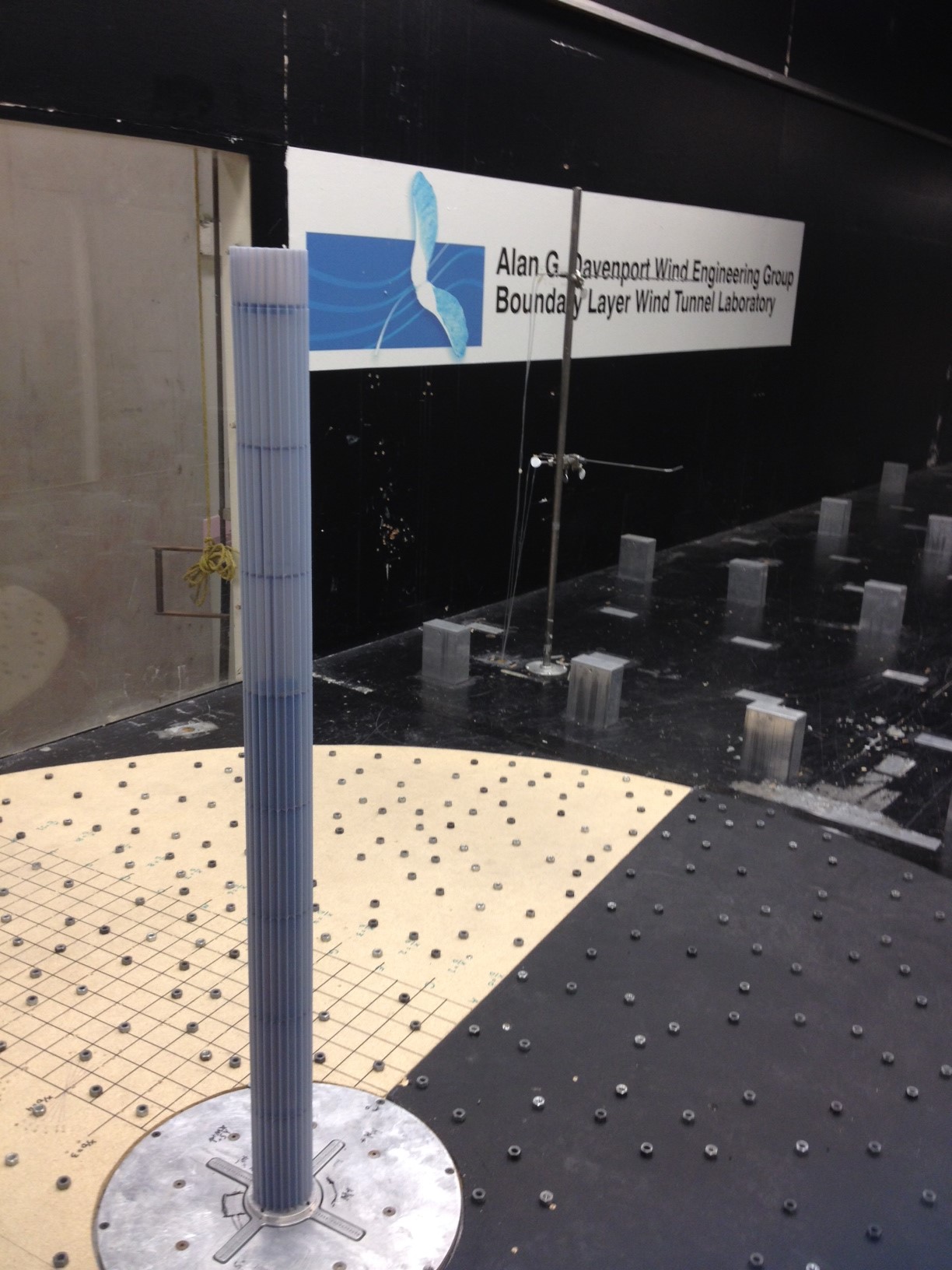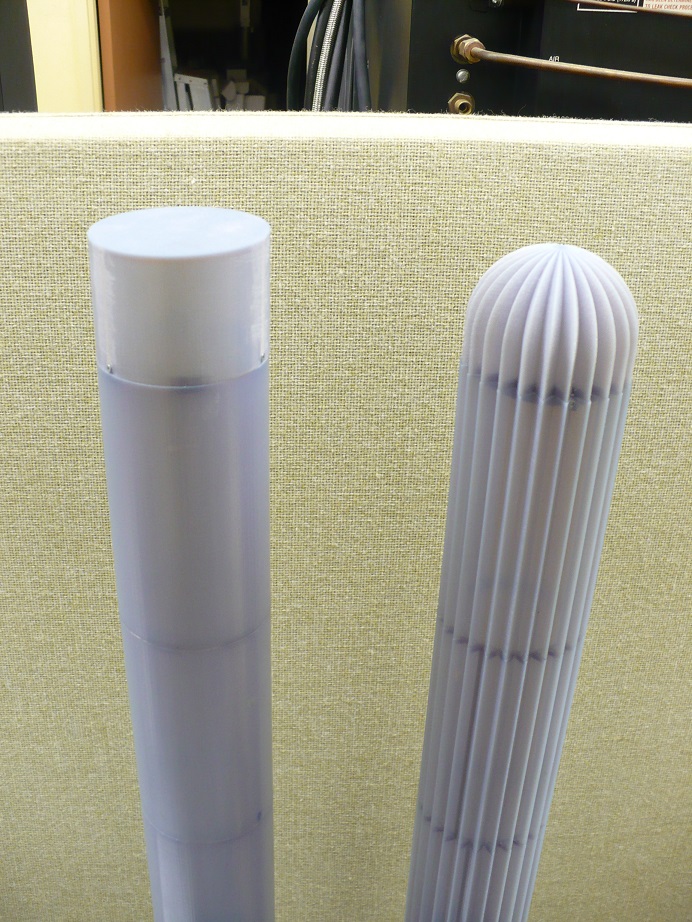Applying bio-mimicry intelligence to the aerodynamic performance of tall slender buildings has potential to lead to not only improved response to wind loading, but generate savings in material and construction costs, affect energy consumption by providing self-shading and controlling local air flow to promote local wind energy generation and ventilation strategies.
To this end, the alongwind and crosswind responses of high aspect ratio (15:1) cylinders, (smooth, roughened and grooved) were obtained from wind tunnel tests in simulated smooth and rough atmospheric boundary layer flows. The influence of top, flat or domed was also studied. The Saguaro cactus-inspired cylinder with 24 circumferential grooves was seen to have large reductions (~20%) for mean and fluctuating alongwind base shear (drag) and overturning moments in comparison with smooth cylinders and is in agreement with 2D studies in uniform low turbulence flow. Domed tops also led to reduced drag over flat tops. Differences in fluctuating crosswind base shear (lift) and overturning moment were much less marked. In spectral terms the amplitudes of response near the pronounced vortex shedding frequency were almost unchanged, however the cactus-shape had a higher Strouhal Number indicating a shift to a higher frequency as might be attributed to a narrowing of the wake.

Tall Cactus model on a HFFB in the University of Western Ontario's Boundary Layer Wind Tunnel

Comparison of the flat-topped smooth cylinder and hemispherical cap on the grooved cylinder